Nof S.Y. Springer Handbook of Automation
Подождите немного. Документ загружается.

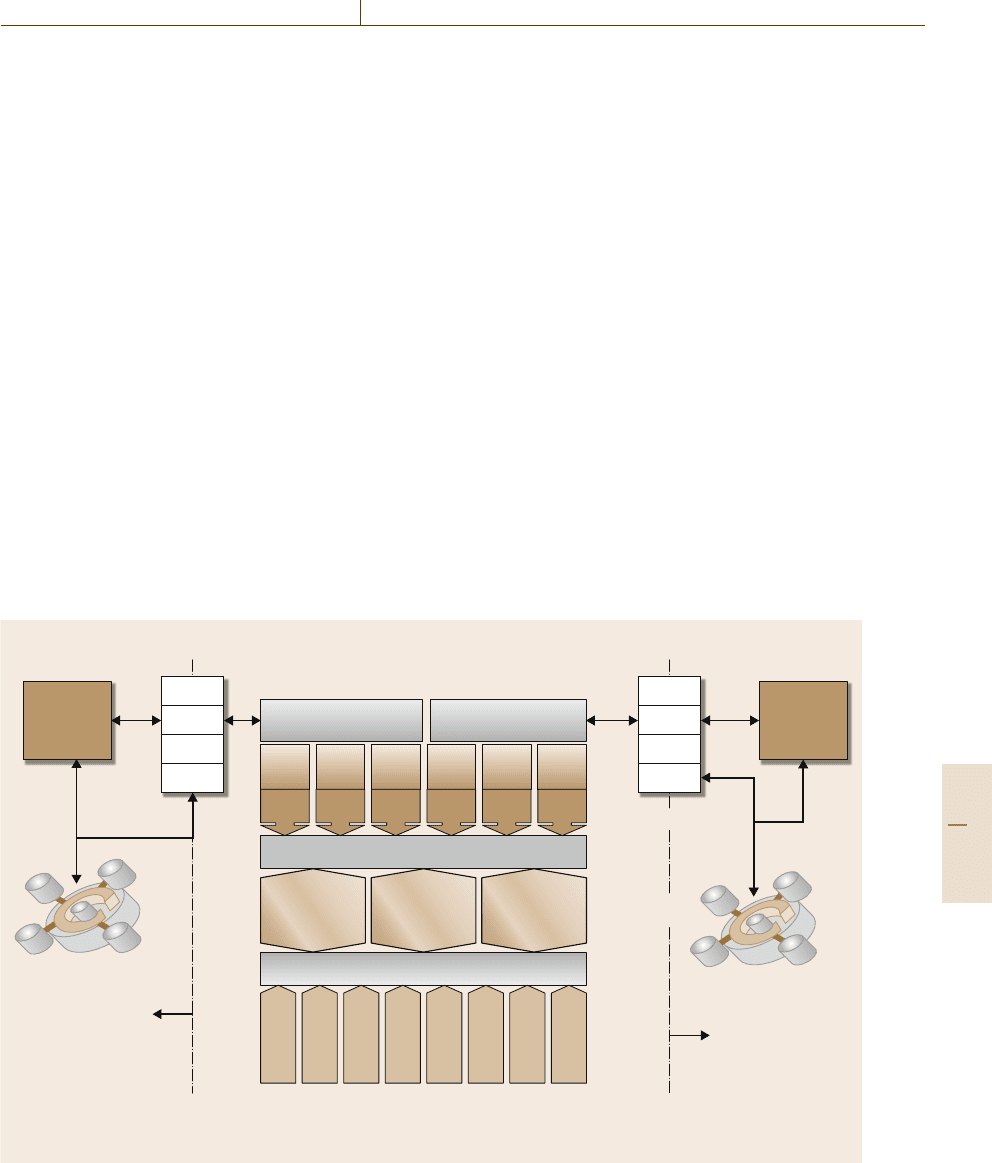
Collaborative e-Work, e-Business, and e-Service 88.2 Theoretical Foundations of e-Work and Collaborative Control Theory (CCT) 1555
e-Business [88.23, 24], healthcare [88.25, 26], trans-
portation [88.27], construction [88.28], and more.
88.2.6 Computer-Integrated
Manufacturing
Computer-integrated manufacturing (CIM) enables the
harmonized integration and management of the entire
product lifecycle fromdesign tocustomer service.Mod-
ern business is centered on intra- and intercollaboration
processes, such as supply chain/network management,
customer relationship management, employee–business
integration, and more. To fully garner the benefits of
this high level of collaboration, organizations need to
implement integrated-enterprise systems. For instance,
Ho and Lin [88.29] focus on the need for better col-
laboration throughout the complete business cycle and
not just focusing on technical integration. In their work,
they incorporate critical success factors (i.e., imple-
mentation strategy, change management, etc.) into the
development of the different stages and components
of an integrated-enterprise system (Fig. 88.9). Choi
et al. [88.30] also develop an integrated enterprise ar-
chitecture, but their focus is on virtual enterprise chains.
Suppliers
and
business
partners
Customers
business
partners
Medium of
interaction
Marketplace
exchange
Marketplace
exchange
Face
to face
Internet
Supplier relationship
management system
Business applications integration infrastructure
Shop-floor integration infrastructure
Customer relationship
management system
Engineering
support systems
Database and
network systems
Manufacturing
execution system
Business
support systems
Manufacturing
support systems
The enterprise lineThe enterprise line
FMS = Flexible Manufacturing Systems; SCM = Supply Chain Management; WH = Warehouse; ERP = Enterprise Resource Planning; EIS = Enterprise Information System;
HR = Human Resources; KM = Knowledge Management; AGVs = Automated Guided Vehicles; CMS = Content Management System; PCBA = Printed Circuit Board Assembly
The extended enterprise
The extended enterprise
CIM
modules
Mobile
devices
SCM
CNC machines
PCBA
Robots
FMS
AGVs
Test equip
CMS
Packing
Data
WH
ERP EIS HR KM
Telephone
Medium of
interaction
Face
to face
Internet
Mobile
devices
Telephone
Fig. 88.9 The integrated enterprise systemreference architecture (after[88.29] withpermission from Taylor and Francis)
Efforts such as these demonstrate the revolution that the
collaborative enterprise world is experiencing with the
evolution of collaborative e-Work principles, theories,
and methodologies.
88.2.7 Human–Computer Interaction
Human–computer interaction (HCI) enables the de-
velopment of systems, platforms, and interfaces that
support humans in their roles as learners, workers, and
researchers in computer environments. The majority
of the work being conducted in HCI has focused on
the methodologies and processes for developing in-
terfaces, the design, implementation or evaluation of
interfaces, and the development of theories and pre-
dictive models of interaction. As the roles of humans
in today’s workplace and society continue to evolve
with the development of new technologies, so will
the focal areas for HCI, among them ambient in-
terfaces, affective computing, sensing interfaces, and
tangible user interfaces [88.31]. For instance, in the
work by Altuntas et al. [88.32], the authors present
a formal approach to include a human material handler
in a computer-integrated manufacturing (CIM) system.
Part I 88.2
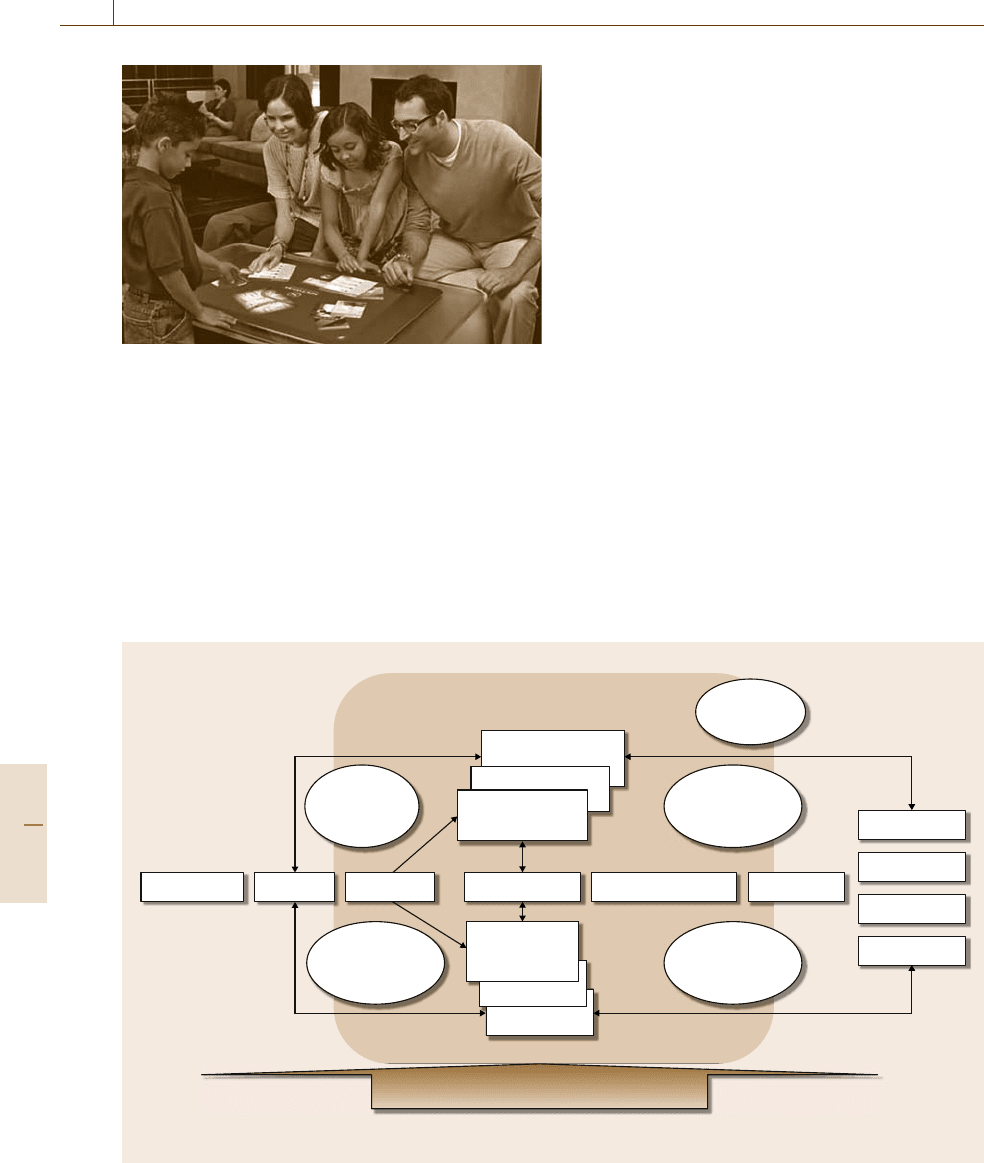
1556 Part I Home, Office, and Enterprise Automation
Fig. 88.10 Microsoft Surface (human–computer interface)
for Sheraton Hotels (courtesy of Microsoft)
As the authors point out, most of the work in control
has focused on automata-based methods for complex
computer-controlled systems, whose application has
been limited as the number of unmanned systems is
relatively small.
HCI applications are starting to cross into the
mainstream; for instance, Microsoft recently released
Surface, an interface that enables users instant access to
information and entertainment via their hands and ges-
MRP, MRP II
Digital business in extended virtual enterprises
Extended product in dynamic enterprises
Four walls of a plant
Supporting the extended enterprise
Production planning
Manufacturing DistributionMarketing and salesSubsuppliers Suppliers CAD/CAM
Reuse
Disposal
Maintenance
Operation
e-Channels Best practicesDigital market places
JIT = Just in Time; MRP = Material Requirement Planning; CAD/CAM = Computer-aided Design/Computer-aided Manufacturing; OPT = Optimized Production Technology
Business to business Business to consumer
JIT, OPT, etc.
Reverse
logistics
Customer
driven design
Supply chain
management
Customer
relationship
management
Co-design
product
models
Design for X
Product and
process design
Production
planning and
control
Fig. 88.11 Extended products in dynamic enterprises (EXPIDE) architecture (after [88.2])
tures while improving collaboration and empowering
consumers in the decision-making process (Fig.88.10).
88.2.8 Extended Enterprises
Extended enterprises enable the creation of architec-
tures, models, and methodologies to integrate business
processes that go beyond the limits of a single enter-
prise and which include end-to-end functions, internal
operations, and entire supply networks. The level of
integration and connectivity of all value areas of sup-
ply networks has significantly increased with the advent
of e-Business, e-Commerce, e-Services, and global-
ization. This trend has also increased the demand for
new e-Work and e-Business applications and solu-
tions to address the challenges faced when the world
around us becomes an e-World. Figure 88.11 presents
the transformation from traditional enterprises into ex-
tended enterprises, as defined by the extended products
in dynamic enterprises (EXPIDE) project cluster from
researchers of the European Information Society Tech-
nologies. The transformation of the enterprise serves as
an example of the challenges and needs for the study
and development of new methodologies, performance
measures, and tools in the e-World.
Part I 88.2

Collaborative e-Work, e-Business, and e-Service 88.2 Theoretical Foundations of e-Work and Collaborative Control Theory (CCT) 1557
The third theoretical foundation area is distributed
decision support and comprises three e-Dimensions:
(1) decision models, (2) distributed control systems,
and (3) collaborative problem-solving, as described
below.
88.2.9 Decision Models
Decision models integrate computer tools and method-
ologies in the implementation of decision theories in
online decision support systems, to provide more ef-
fective and better-quality decisions. The development
and implementation of decision models to function in
the e-world spans a wide spectrum. For instance, in
e-Finance, one model called create–collect–manage–
protect (CCMP) extends the finance framework from
solely providing the technology perspective to one
that better enables strategic decision-making by mak-
ing use of enterprise application integration (EAI) with
common object request broker architecture (CORBA)
and web services to demonstrate the added value
of using a network approach to the digitalization of
financial and business content [88.34]. In a differ-
Administration module
Physical links
Finance OthersMarketing/salesCustomers
Physical links
ORB/IIOP
ORB/IIOP
Quality-centric module
IIOP = Internet Inter-ORB Protocol; ORB = Object Request Broker; DBMS = Database Management System; SPC = Statistical Process Control;
GUI = Graphical User Interface; FMEA = Failure Modes and Effects Analysis
Purchasing
Gloal-based
subcontractors
Production
engineering
Quality
assurance
Product
design
Specifications
Other tools
FMEA
QIS GUI
SPC
Raw data
DBMS/workflow
manager module
IT support
Human
resources
Production
planning
LogisticsSuppliers
Fig. 88.12 Online quality information system (OQIS) reference architecture (after [88.33])
ent application, fuzzy analytic hierarchy and fuzzy
Delphi methodologies are used for multicriteria eval-
uation of e-Marketplace selection to deal with the
uncertainty and vagueness of humans in group deci-
sion process, and therefore guarantee more effective
decision making [88.35]. In a different application
area, e-Manufacturing, an online quality information
system (OQIS) using an object broker architecture
along with a client–server enables its users both
to obtain real-time data and information from any
location and to address complex quality and deploy-
ment costs decisions (Fig.88.12). The three examples
of decision models described, along with their ap-
plications, highlight the influence and evolution of
decision models needed in e-Business, e-Works and
e-Service.
88.2.10 Distributed Control Systems
Distributed control systems empower systems with
a greater degree of autonomy by enabling all parties
(e.g., members of a supply network) to negotiate for
the assignment/allocation of tasks and their respective
Part I 88.2
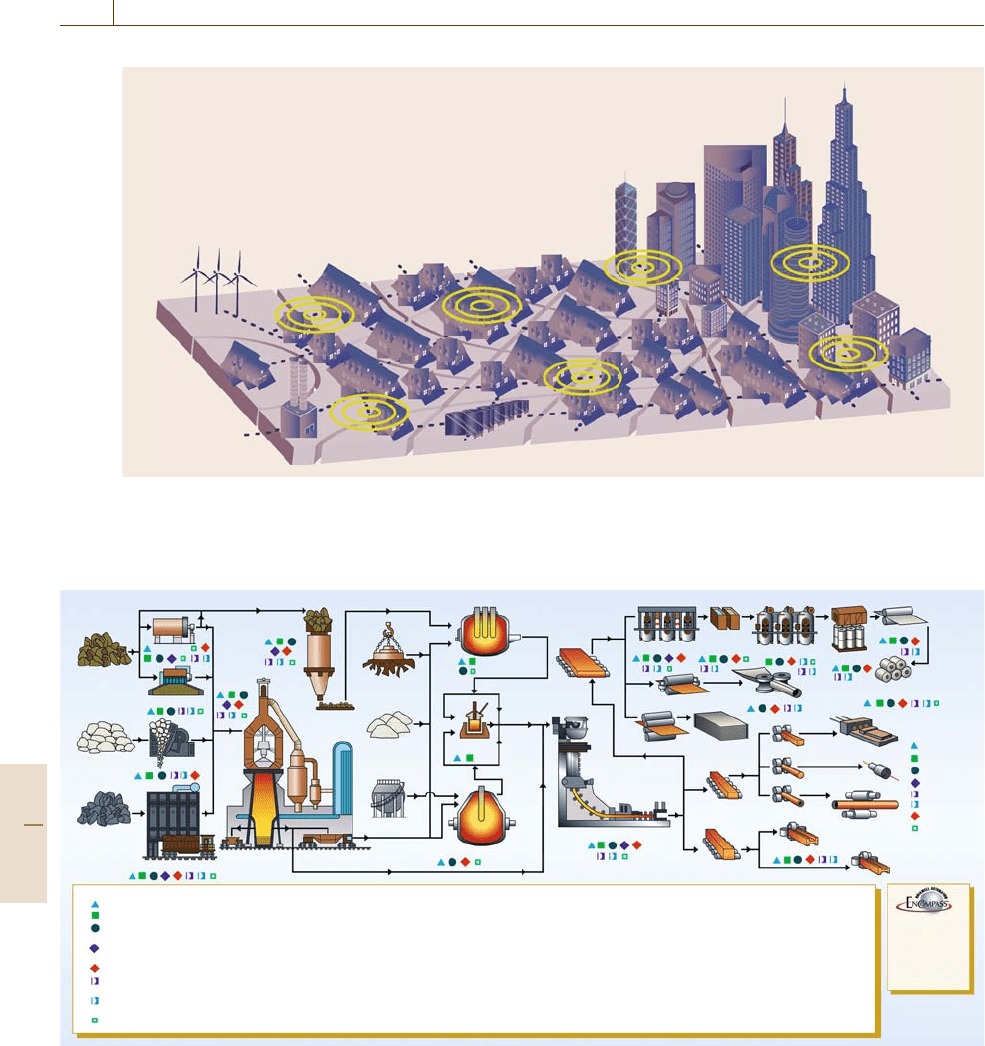
1558 Part I Home, Office, and Enterprise Automation
Fig. 88.13 SmartGridCity by Xcel Energy integrates high-speed communication technologies with the electric grid. The
system enables real-time control by customers using devices installed at their homes to automate their home energy use
and the use of integrated infrastructure such as plug-in hybrids, battery systems, solar panels, and more (courtesy of Xcel
Energy)
M
M
M
M
M
M
M
M
M
M
M
M
M
M
M
Integrated process control solutions (ProcessLogix“)
PC-based control (A-B Open Controller“, SoftLogix“)
Motion control (A-B GMC“, CNC“)
I/O systems (A-B FLEX“ I/O, FLEX Ex“, ArmorBlock I/O“)
Information network (Ethernet
¤
)
Device network (DeviceNet“)
Control and SCADA networks (ControlNet“; A-B DF1“,
DH+“, DH485, Remote I/O)
Programming software (Rockwell software RSLogix 5“,
RSLogix 500“, RSLogix 5000“)
Modular control (A-B SLC“, PLC
¤
, ControlLogix“; Reliance electric AutoMax“)
MMI software (Rockwell software RSView32“, RSTools“; Reliance electric SIGMA“)
AC and DC industrial motors (A-B 1329R, 1329L, 1325DR, 1365, 1395, 1397;
Reliance electric DutyMaster
¤
, E-Master
¤
, RPM“ AC, RPM“ III, IQ intelligent“, XE“)
Variable speed AC and DC drives (A-B SSC“, 1305, 1336 PLUS II, FORCE“,
1336 IMPACT“, 1397; Reliance electric GV3000/SE“, FlexPak
¤
3000, SA3100, SD3000)
Drive systems (Rockwell automation)
Gearing (DODGE TORQUE-ARM“, TIGEAR“, MAXUM
¤
, MASTER XL“, REEVES“,
ULTIMA“, CST“, CYCLONE“, QUANTIS“)
Bearings (DODGE SLEEVOIL“, UNIFIED“, SAF-XT, Plummer block, IMPERIAL“,
S-2000, D-LOK“, SC, SCM)
Motor control centers (A-B CENTERLINE
¤
)
Supportive technologies
Core technologies
Communications software (Rockwell software RSLinx“)
Process and control software (Rockwell software
RSBatch“, RSLogix Frameworks“)
Information software (Rockwell software RSSql“)
Sensors (A-B Photoswitch
¤
, Photoswitch Series 9000,
Photoswitch 10000; DODGE EZLINK“)
Switches (A-B safety and limit switches)
Encoders and resolvers (A-B)
Push buttons and signalling (A-B RediSTATION“,
RediPANEL“, Control tower“ stack lights)
Message displays (A-B Dataliner“, MessageView“,
MessageBuilder“)
Graphic terminals/industrial computer products
(A-B PanelView“, PanelBuilder“, RAC 6000 Series)
Low-voltage motor management (A-B MCS“,
SMM, SMC, SMP, contactors, overload protection)
Power quality and automation
(A-B Powermonitor II, Line Synchronization Module“)
Power transmission components (DODGE D-Flex,
PARA-FLEX“, GRID-LIGN“, FLEXIDYNE“,
Mine Duty EXTRA“)
Medium voltage control (A-B AC drives, starters, SMC)
Encompass™ referenced
Products/technology
¥ MES
¥ Weigh scales
¥ Surge protection
¥ Vision products
¥ Wireless modems
Iron ore
Limestone
Pellets
Sinter
Blast
furnace
Direct
reduction
Crushed
Coal
Slag
Molten iron
Coke ovens
Oxygen
Oxygen furnace
Lime & flux
Ladle
metallurgy
Scrap
Electric
furnace
Slab
Hot strip
Continuous casting
Bloom
Billet
Steel platesPlate
Skelp
Structural shapes
Rails
Seamless pipe
Tube rounds
Rods
Wire & wire
products
Cold drawn
barsHot rolled bars
Welded pipe
Slitting, cut-to-length galvanizing,
and other coated flat-rolled products
Temper rolling
Annealing
Cold strip
Pickling
& oiling
M
M
M
M
Fig. 88.14 Distributed control system in the steel industry (courtesy of Rockwell Automation, Inc.)
individual and group reward (incentives). Distributed
control systems are common in manufacturing sys-
tems and in other processes in which the control
is more effective and responsive when it is not lo-
cated centrally but rather is distributed throughout
the system, with local components being controlled
by one or more controls. Typical examples of dis-
tributed systems include: electrical power grids and
Part I 88.2
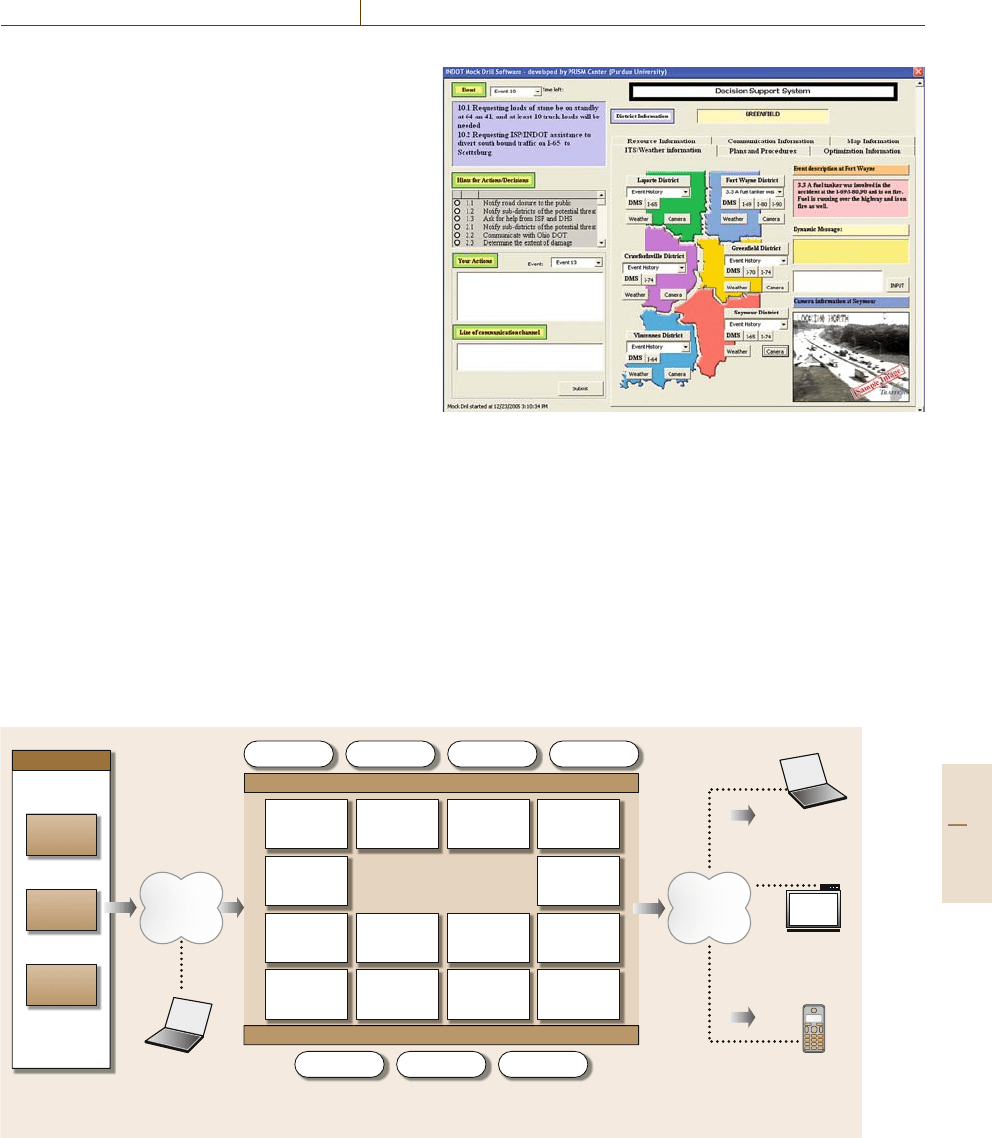
Collaborative e-Work, e-Business, and e-Service 88.2 Theoretical Foundations of e-Work and Collaborative Control Theory (CCT) 1559
power plants (Fig.88.13), water management systems,
oil refining systems, sensor networks, pharmaceuti-
cal manufacturing, cement process (Fig.88.14), and
more.
88.2.11 Collaborative Problem-Solving
Collaborative problem-solving systems provide thenec-
essary information exchange methodologiesand models
to influence parties (e.g., members of a supply net-
work, or emergency response network, Fig.88.15)in
their decision-making processes so as to achieve har-
monization, coherence in decisions, and better results
(e.g., financial, customer service rankings) for all in-
volved parties. For example, in the work by Farand
et al. [88.37] the authors examine collaborative clinical
problem-solving in the context of telemedicinal con-
sultations in order to assess the degree to which the
technological environment preserves medical reasoning
under traditional settings. A theoretical framework and
case study were implemented to measure the achieve-
ment of the goals defined. Another example in the
medical field applies Bayesian networks to model in-
dividual student and group knowledge to better define
problem-based learning (PBL) methodology for the
teaching of clinical reasoning skills. The system de-
veloped, collaborative medical tutor (COMET), is an
intelligent tutoring system for collaborative medical
PBL [88.38].
Assets
manager
VOD
DVD
Beta
Camera
Linear TV Livecost
Advertising Affiliates
Web 2.0
elements
Content
aggregator
UGC CRM
Encoding DRM Reports
Business
manager
AD server
API
API
CRM
Content source
Playlist
Media serverCDN Encoder
e-Payment
InternetInternet
PC
Web interface
DRM = Digital Right Management; VOD = Video on Demand; API = Application Programming Interface; PDA = Personal Digital Assistant;
CDN = Content Delivery Network; CRM = Customer Relationship Management; AD = Advertising
Set-top box
PDA
V-ware™
Fig. 88.16 v-Ware middleware architecture (printed with permission from Best TV Video Management Solutions)
Fig. 88.15 Mock/drill training interface for collaborative and dis-
tributed problem solving. The tool was designed to train trans-
portation employees for emergency response. Trainees are able to
interact with different users, see their actions, create their own
action plans and decisions, request resources, and have access to
a variety of organizational information needed to address the task at
hand (after [88.36])
The fourth theoretical foundation area is active
middleware and comprises four e-Dimensions: (1) mid-
dleware technology, (2) distributed knowledge systems,
(3) grid computing, and (4) knowledge-based systems,
as described below.
Part I 88.2

1560 Part I Home, Office, and Enterprise Automation
88.2.12 Middleware
Middleware technology enables interoperability among
distributed, heterogeneous applications, including leg-
acy and advanced environments. Middleware is a layer
of services or applications that provides the connectiv-
ity between the operating systems and network layers,
and the application layer. For instance, in its basic op-
eration, middleware enables the smooth connectivity
and communication, and therefore functionality, be-
tween an older computer and a new scanner, printer
or other peripheral components. In more advanced ap-
plications, middleware enables interoperability among
more complex systems and networked organizations.
Middleware is classified into the following categories
of its e-Services according to the functions they pro-
vide: (1) distributed tupleswhich function as distributed
relational databases, the most widely deployed middle-
ware, (2) remote procedure call (RPC), which enables
programmers to invoke a procedure across a network,
(3) message-oriented middleware (MOM), which pro-
vides access to a message queue across a network, and
(4) distributed object middleware, which provides the
abstraction of an object that is remote but whose meth-
ods can be recalled just like those of an object in the
same local address as the user. An example of a mid-
dleware technology concerning video applications is
V-Ware, a middleware solution for online video ser-
vices that supports video on demand (Vo D), linear TV,
user generated content (UGC), and live broadcasting,
and is able to distribute it across diverse networks of
TV, personal computers (PCs), and portable devices
(Fig.88.16).
88.2.13 Distributed Knowledge Systems
Distributed knowledge systems are a collection of
autonomous knowledge-based objects sometimes also
referred to as knowledge agents. In collaborative envi-
ronments, agents (Sect.88.2.2) interact with each other
and work together to evolve the knowledge needed to
improve decisions or solve queries, based on their re-
spective abilities. In the work by Ho et al. [88.39]
for instance, the authors develop a distributed knowl-
edge model for knowledge management to support
the development and implementation of enterprise
systems involving information, system, and software-
engineering technologies. The developed knowledge
systems need to be updated because they are required to
maintain high reliability, integrity, andquality of service
for large-scale implementations.
Fig. 88.17 View inside a server tape Storateck in the com-
puter center for the grid technology of the Large Hadron
Collider (courtesy of CERN)
88.2.14 Grid Computing
Grid computing is a term that evolved in the mid
1990s to denote well-organized computing services
that enable rapid sharing, selection, and aggregation of
a wide variety of geographically distributed comput-
ing resources for solving large-scale and data-intensive
computing applications. A computational grid provides
dependable, pervasive, consistent, and inexpensive ac-
cess to high-end computational resources [88.40]and
enables its users to perceive heterogeneous resources as
homogeneous. The creation of virtual (v-)environments
(i.e., v-Factories, v-Organizations, etc.) requires the de-
velopment of the necessary grid technology [88.41].
One application of grid technology that has garnered
and will continue to capture people’s attention is the
Large Hadron Collider (LHC)atCERN, the European
Organization for Nuclear Research. The LHC comput-
inggrid(LCG) will be one of the largest data-intensive
applications in the world, combining and analyzing
Part I 88.2

Collaborative e-Work, e-Business, and e-Service 88.2 Theoretical Foundations of e-Work and Collaborative Control Theory (CCT) 1561
Table 88.1 MeDICIS components (after [88.42], with permission from Elsevier)
Levels of Components Unified modeling Method Other sources
MeDICIS of MeDICIS language (UML)foranalyzing of inspiration
element and structuring
knowledge
(MASK) elements
Macro Business model Case diagrams; Unified modeling
Class diagrams methodologies (UMM),
Unified enterprise modeling
language (UEML),
Universal description discovery
and integration (UDDI)
Cooperation model Case diagrams; UEML
Class diagrams
Agent model Class diagrams Common knowledge acquisition
Micro Communication Class diagrams; and documentation structuring
model Sequence diagrams (KADS)
Multiagent systems (MAS)
Coordination model Concept model; Structured analysis and design
Task model technique (SADT), UML,
MASK; workflow: Integrated
definition methods (IDEF3)
Collaborative Concept model;
problem solving Task model
(CPS) model
Tool Case diagrams; Others
specification Component diagram;
Deployment diagram
data from the LHC detectors for over 10 000 scientists
and over tens of thousands of computers around the
world (Fig. 88.17). The computing grid will sift through
petabytes (a million gigabytes) of particle collision data
to uncover clues about the origins of the Universe.
From a business and service point of view, Brocke
et al. [88.43] discuss the alignment of business needs
of today’s organizations and the availability of grid
technology to better support virtual organizations. The
authors argue that the collaborative reference model is
a promising technique to enable the previously men-
tioned alignment by supporting distributed agents and
the integration of technological, methodological, and
organizational aspects.
88.2.15 Knowledge-Based Systems
Knowledge-based systems provide the capabilities to
mine, refine, construct, and extract information from
a variety of sources, enabling its transformation into
knowledge capital. For instance, Boughzala [88.42]
introduces the methodology for designing interenter-
prise cooperative information system (MeDICIS), an
information system that models cooperative processes
at three levels (communication, coordination, and
collective problem-solving) in order to manage the
knowledge available and generated by the cooper-
ation. The development of MeDICIS highlights the
existing interconnections between the many differ-
Part I 88.2

1562 Part I Home, Office, and Enterprise Automation
ent dimensions of e-Work, as presented before, as it
integrates, to name just a few (1) agents, (2) collab-
orative problem-solving, and (3) extended enterprises
(Table 88.1).
88.3 Design Principles for Collaborative e-Work, e-Business,
and e-Service
The flattening of the world [88.44] has significantly
changed the ways in which business and commerce
are conducted in the new world landscape. To a large
extent, this has been enabled by automation, from
communication and digital information exchange to
extended supply and logistics networks, international
transportation, and more. As a result of the flatten-
ing effect, work has become more distributed and
decentralized and the magnitude and distribution of
worldwide markets has significantly increased. These
changes have brought opportunities for the develop-
ment of better e-Work methods,augmentation of human
physical, cognitive, temporal, and location abilities at
work. However, justas theopportunities haveexpanded,
so have the challenges and complexities associated with
e-Work, particularly the scalability of workflow, infor-
mation, and task overload. A number of projects that
have attempted to understand and address these new re-
quirements and challenges, and in turn develop useful
theories and solutions, are summarized in Table 88.2.
88.3.1 e-Work Design Principles
The growing number of distributed and decentralized
work systems over the last two decades has given
e-Work the foundation for the exploration and devel-
opment of new theories, models, and methodologies.
The environment in which e-Work research has evolved
has shown the complex needs and challenges that lie
ahead for the effective developmentand implementation
of e-Work. e-Work brings new and exciting oppor-
tunities for the definition of emerging and enhanced
work methods and systems, as well as better outcomes
and higher yields, by augmenting with e-Support the
physical, cognitive, temporal, and locational human
abilities. Research on collaborative e-Work, conducted
at the Production, Robotics, and Integration Software
for Manufacturing and Management (PRISM) Center
at Purdue University to understand the needs and chal-
lenges, and develop appropriate theories, and solutions
is highlighted in Table 88.2. In the table, many of the
15 dimensions introduced in Sect.88.2 are addressed
in various manufacturing, production, and service ap-
plication domains. This research has been rooted in
successful, proven principles and models of heteroge-
neous, autonomous, distributed, and parallel computing
and communication.
Several collaborative e-Work design principles,
which have emerged over the years as useful results
of the collaborative control theory, are described in this
section.
Principle of Cooperation Requirement Planning
(CRP)
Originally developed by Rajan and Nof [88.45,46], this
principle considers collaboration as one of the most
powerfulaugmentations ofwork abilities.Collaboration
can be measured in a spectrum from minimal informa-
tion sharing and exchange (implying a certain degree of
cooperation) to fully integrated and collaborative enter-
prises. In order to achieve effective collaboration in any
portion of the spectrum it is necessary to plan ahead.
The principle of cooperation requirement planning in-
cludes two phases: (1) a detailed requirement plan of
who, how, and when (CRP-I) is generated based on
work objectives and available resources; (2) during ex-
ecution, real-time implementation enables the revision
of the plan to CRP-II, which meets spatial and temporal
challenges, changes, and constraints. More recent work
on this principle has included the integration of CRP
with error diagnostics, recovery, and conflict resolution
(Fig.88.18) and the use of best-matching protocols for
the identification and further implementation of best
policies to address and correct errors and conflicts in
robotic assembly and disassembly (Fig.88.19). Future
extensions will need to incorporate fuzzy logic and
learning strategies (i. e., neural networks, genetic algo-
rithms) to further enable real-timechanges andlearning.
The effective implementation of this principle requires
both advanced and adaptive real-time planning in or-
der for the cooperation and collaboration efforts to be
fruitful and efficient.
Principle of e-Work Parallelism
Originally developed by Ceroni and Nof [88.47, 48],
this principle exploits the fact that work and interac-
Part I 88.3

Collaborative e-Work, e-Business, and e-Service 88.3 Design Principles for Collaborative e-Work, e-Business, and e-Service 1563
Table 88.2 PRISM Center discoveries of e-Work theories, models, and benefits
CCT guideline Collaborative Principles used Production/business/ Results: tool/model
e-Work benefits service areas
Cooperation Collaboration planning Resource planning Multirobotic assembly CRP [88.45]
requirement
and interaction Multiprocessors CRP [88.46]
planning (CRP)
Multiagents design Agent theory Manufacturing operations ABMS [88.19,49]
Parallelism Collaboration protocol Telecomm. protocols ERP/CRM applications TIE/P [88.50–52]
design Adaptive control Electronics testing TestLAN [88.53]
Comm. protocols Wireless MEMS TIF [88.54]
Exchange protocols Supply networks BMP [88.55]
Middleware protocols Client–servers Automotive electronics RAP [88.56,57]
Flexible assembly TOP [88.58,59]
Parallelism Parallel computing Global shoe design & mfg. DPIEM [88.47,48]
Resource and task Local-area networks Electronics assembly & test TestLAN [88.60,61]
allocation Internet Global automotive supply net. MEN method [88.62]
Conflict and error Synchronize/ Agent theory Robotic maintenance ServSim [88.63]
detection and
resynchronize
prevention (CEDP)
Information assurance Total quality Agent-based mfg./service (MERP) [88.64]
Error detection Computer recovery Robotic assembly NEFUSER [88.65]
and prevention Multiagents Multirobot systems EDPA [88.66];
CEPD [88.67]
Fault tolerance Fault-tolerant Sensor fusion Flow MEMS sensors FTTP* [88.68–70]
integration Wireless MEMS sensors TIE/MEMS [88.71]
(operate despite faults)
Conflict resolution Telecommunication Facility design by a team FDL [88.72]
Coassembly Multirobot systems FDL-CR [88.73,74]
Assembly/disassembly CRP-CR [88.75]
CRP-BMP [88.76]
Join/leave/remain Multienterprise Network flow Distributed networked MEN Opt. [88.62]
optimization Enterprises JLR [88.77]
Organizational learning Enterprise computing Manufacturing/ CMS [88.78]
assembly corp.
Lines of Workflow integration Data flow Aerospace mfg. DFI [88.79]
collaboration
and coordination Distributed database Computer-integrated mfg. DAFNet & AIMIS [88.80,81]
and command
Workflow protocols BMP [88.82]
(LOCC)
Information sharing Virtual environments Manufacturing cells FDL [88.83]
and collaboration Task graphs Distributed designers IDM [88.84]
Network computing Distributed teams Co-X Tools [88.85]
Internet/intranet Supply networks Shared Process [88.24]
Construction supply chain Share Process [88.86]
Production and sales T-C-M [88.87]
e-Learning/e-training Learning theory ERP applications MERP/C [88.88]
Distributed DSS Emergency response TSTP [88.36]
Viability measures Artificial life Human–robot facilities TIE/A [88.89–91]
e-Work scalability Distributed computers Supply networks MEN Opt. [88.62]
Part I 88.3
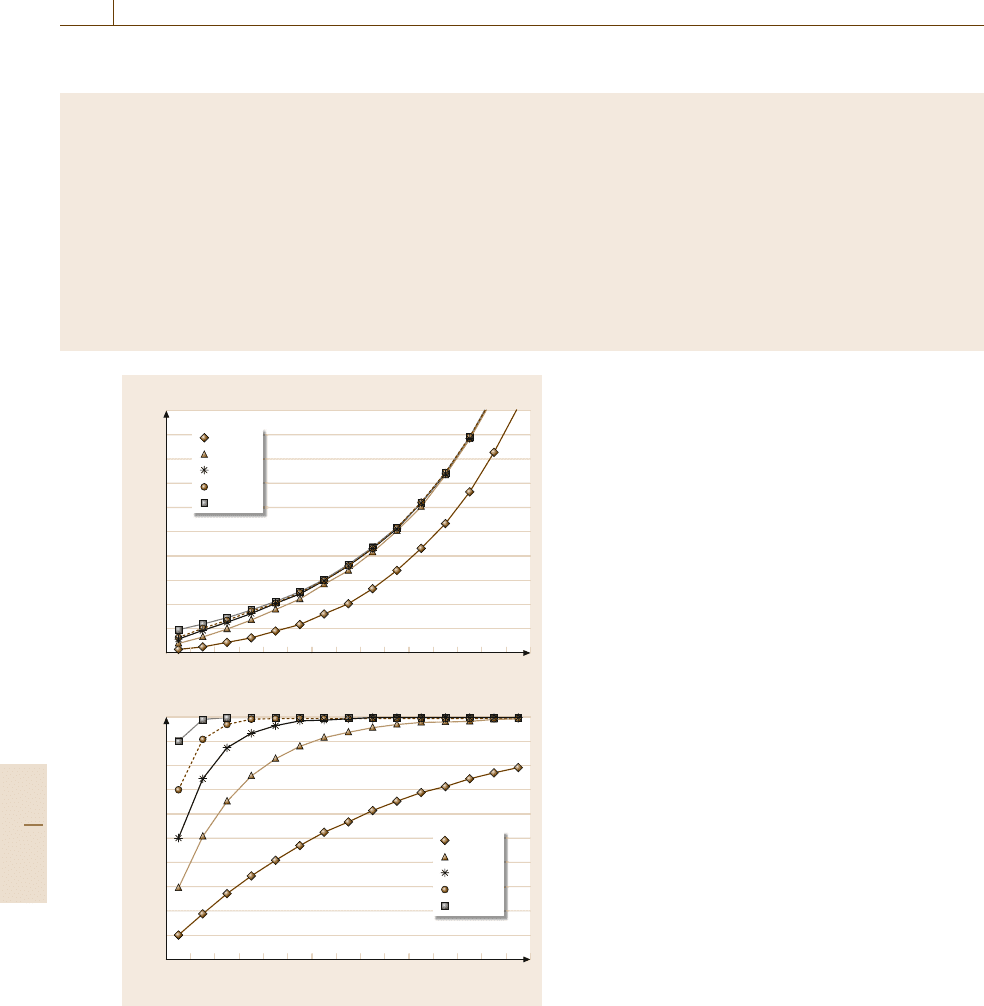
1564 Part I Home, Office, and Enterprise Automation
Table 88.2 (cont.)
ABMS: agent-based management system; AIMIS: agent interaction management system; BMP: best-matching protocol;
CMS: corporate memory system; Co-X: collaborative tool for function X; CEPD: conflict and error prediction and detection;
CRP: collaboration requirements planning; DAFNet: data activity flow network; DFI: data activity flow integration;
DPIEM: distributed parallel integration evaluation method; EDPA: error detection and prediction algorithms;
FDL: facility design language; FDL/CR: facility design language/conflict resolution;
*FTTP: fault-tolerance time-out protocol (patent pending); IDM: iterative design model; IRD: interactive robotic device;
JLR: join/leave/remain; MEN: multienterprise network; MERP/C: ERP e-Learning by MBE simulations with collaboration;
NEFUSER: neuro-fuzzy systems for error recovery; RAP: resource allocation protocol; ServSim: maintenance service simulator;
TestLAN: testers local area network; TIE/A: teamwork integration evaluator/agent; TIE/MEMS: teamwork integration evaluator/MEMS;
TIE/P: teamwork integration evaluator/protocol; TIF: data information forwarding; TOP: time-out protocol;
TSTP: transportation security training portal
123456789101112131415
b) Cost
Number of iterations
100
90
80
70
60
50
40
30
20
10
0
123456789101112131415
a) Cost
Number of iterations
1000
900
800
700
600
500
400
300
200
100
0
s = 0.1
s = 0.3
s = 0.5
s = 0.7
s = 0.9
s = 0.1
s = 0.3
s = 0.5
s = 0.7
s = 0.9
Fig. 88.18a,b Comparison of expected costs of conflict
resolution
(a) without conflict resolution methodology
Mcr (unbounded cost), and
(b) with conflict resolu-
tion methodology Mcr (bounded cost) (after [88.92])
(s =rate of conflicts)
tions in software and human workspaces can and must
be allowed to run in parallel. To be effective, e-Work
systems cannot be constrained by sequential (linear)
tasks. In e-Work, the principle of workflow parallelism
has deeper implications due to the distributed nature
of the e-Activities and the fact that interactions take
place over human and software spaces and can include
(1) human–human interactions, (2) human–machine
and human–computer interactions, and (3) machine–
machine and computer–computer interactions.
Ceroni [88.47] defined the degree of parallelism
(DOP) as the maximum level of resources and task
parallelism necessary to balance the tradeoff between
increased communication, transportation, and equip-
ment costs and the increased productivity gained by
the given level of parallelism. The authors developed
the distributed planning of integrated execution method
(DPIEM) as an effort to satisfy a CRP-based plan
(Fig.88.20). Among the issues explored in the planning
was the ability to determine the optimal DOP, as seen
in Fig.88.21.
In addition to the definition of DOP,theprinciple
of e-Work parallelism also addresses issues regarding
the design and implementation of coordinated problem-
solving and decision support that are of concern to the
development of active middleware. The principle in-
cludes five guidelines to let e-Work support systems
(EWSS):
1. Formulate, decompose, and allocate problems
2. Enable applications to communicate and interact
under task administration protocols
3. Trigger and resynchronizeindependent agents to act
coherently and cohesively in addressing problems,
making decisions, and acting
4. Enable agents to reason, interact, and coordinate
with other agents when needed
5. Develop conflict resolution, error recovery, and di-
agnostic and recovery strategies.
Part I 88.3
